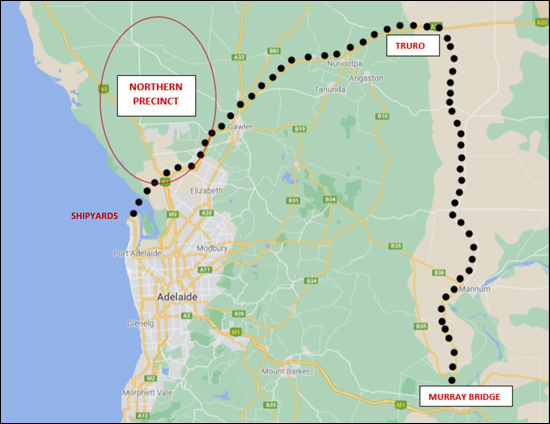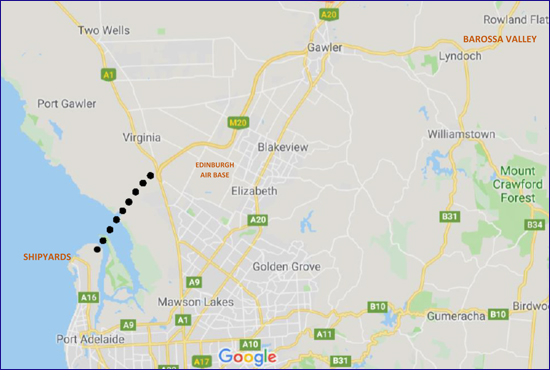 It’s been said that we are born with clenched fists but die with open hands.
It’s been said that we are born with clenched fists but die with open hands.
In Linda Ellis’ moving poem, That Little Dash, three stanzas stand out:
I read of a man who stood to speak
At the funeral of a friend,
He referred to the dates on her tombstone
From the beginning to the end.
He noted that first came her date of birth
Then of the next date spoke with tears
But he said what mattered most of all
Was the dash in between the two years.
So, when your eulogy is read
Your life’s actions to rehash
Will you be proud of the things they say
About how you spent your dash?
As we look back on 2024 and think of all those whose tombstones are now inscribed with the year 2024 after their dash, we think about how they spent their lives.
And as we embark on a new year, we are inundated with pundits’ predictions of what to expect in the year ahead.
It brings to mind the scene in Shakespeare’s great play Macbeth, where the three witches appear before Macbeth and his friend Banquo.
The witches predict that Macbeth will be king, and that one of Banquo’s sons will also be king one day.
Banquo is not convinced and responds, “If you can look into the seeds of time and say which seed will grow and which will not, speak then to me.”
Like Banquo, we might respond to the pundits’ predictions, ‘Who can look into the seeds of time’? Who can predict the future?
None of Banquo’s sons became king.
Like the witches in Macbeth, today’s political pundits, economic forecasters, weather forecasters and social/population forecasters get it wrong time after time.
So many predictions about the future have turned out to be hopelessly wrong – think ‘the internet will be a passing fad’, ‘online shopping will never take off’, ‘interest rates won’t rise for the next two years (they went up 13 times), ‘Perth will be the 21st century’s first ghost metropolis’, ‘global warming is so baking the Earth that even the rain that falls won’t fill our dams and river systems’, ‘2009 may be the Arctic’s first ice-free year’ (in 2009 Arctic ice was around 5 million square kms, the same as it is today).
As someone wryly observed, ‘Ice doesn’t lie, but climate scientists do’.
Upping the ante, United Nations Secretary-General António Guterres stated recently, ‘The era of global warming has ended; the era of global boiling has arrived”.
You get the picture.
And when it came to Covid, politicians, public sector bureaucrats, pharmaceutical company executives, the media – all in cahoots with one another – were all wrong on lockdowns, border closures, school closures, masking, and even the vaccines themselves.
While we here at the Australian Family Party are not going to get into making predictions about what may or may not happen in 2025, we can clearly see what has been unfolding globally.
Substack writer Santiago Pliego calls it a ‘vibe shift’ – a rejection of phonies and pretenders, and an embracing of the authentic.
British historian Niall Fergusson sums up Pliego’s thesis this way: ‘The vibe shift is a return to reality, a rejection of the bureaucratic, the cowardly, the guilt-driven. A return to greatness, courage, and ambition’.
The start of this global vibe shift can be traced to early 2024 when Argentina’s President, Javier Milei, got out his chainsaw and promised to unleash it on Argentina’s bloated bureaucracy!
This was followed by the collapse of the French and German governments in Europe.
And, of course, the biggest vibe shift of all, the re-election of Donald Trump.
Significantly, as well as being profoundly opposed to the whole ‘diversity, equity and inclusion (DEI)’ agenda, what vibe shifters have very much in common is their unequivocal support for Israel.
Then there’s Canada and Australia, whose leaders are as invested in DEI as any country in the world and are anti-Israel.
And both are next in the election firing line.
Their hatred of Israel invokes the Biblical prophecy by Israel’s enemies, “Let us wipe them out as a nation; let the name of Israel be remembered no more.” – Psalm 83:4
‘From the river to the sea ….’?
Yet, as the Hebrew song ‘Am Yisrael Chai’ goes, “The people of Israel live!”
Interestingly, across the West, there has been a measurable growth in Christianity and church attendance.
The vibe shift is here, and it is also coming for the renewable energy merchants who have leapt on to the climate change bandwagon and are raking in billions of dollars gaming the system, raising energy prices, impoverishing consumers, destroying jobs, and fleecing taxpayers.
Also known as bootleggers or carpetbaggers, these crony-capitalists stop at nothing to make money.
One day the whole renewable energy racket will collapse under the weight of its own absurdity, and someone will write a book called ‘50 Years of Madness: How the World was Conned’.
Sadly, the major parties do nothing to combat any of this.
Our only hope is for a few minor parties like ours to get elected and through a balance-of-power position, influence whichever major party is in office.
None of us has any say over the dates to the left and right of our dash, but we do have control over the dash.
What better way to spend our ‘dash’ than to get on board the vibe shift.
Thank you for your support.
 In the book of Revelation, the last book of the Bible, there is a vivid description of The New Jerusalem – The Holy City – referred to in John Bunyan’s Pilgrim’s Progress as ‘The Celestial City’, the ultimate heavenly home of believers.
In the book of Revelation, the last book of the Bible, there is a vivid description of The New Jerusalem – The Holy City – referred to in John Bunyan’s Pilgrim’s Progress as ‘The Celestial City’, the ultimate heavenly home of believers. A recent 4-Corners program titled ‘Going, Going, Gone …’ asked the question, “What is driving Australia’s property frenzy?”
A recent 4-Corners program titled ‘Going, Going, Gone …’ asked the question, “What is driving Australia’s property frenzy?” A man visited a doctor saying he was deeply depressed. Confiding in the doctor, the man said he felt all alone in a threatening world and that life was just too hard. What’s more, he said he was very uncertain about what lay ahead for himself and his family.
A man visited a doctor saying he was deeply depressed. Confiding in the doctor, the man said he felt all alone in a threatening world and that life was just too hard. What’s more, he said he was very uncertain about what lay ahead for himself and his family. The story is told of Joseph of Arimathea, the wealthy businessman who donated his own tomb for Jesus’ burial. When news of his generous gesture spread amongst Joseph’s business colleagues, a number of them went to see him. “Joseph, are you sure you know what you’re doing, giving your tomb to this Jesus of Nazareth? Tombs are very valuable and yours is the best in the cemetery,” they implored.
The story is told of Joseph of Arimathea, the wealthy businessman who donated his own tomb for Jesus’ burial. When news of his generous gesture spread amongst Joseph’s business colleagues, a number of them went to see him. “Joseph, are you sure you know what you’re doing, giving your tomb to this Jesus of Nazareth? Tombs are very valuable and yours is the best in the cemetery,” they implored. For instruction on how to regulate society it’s hard to go past the 10 Commandments. By comparison, according to Thomson Reuters’ Legal Encyclopedia, Australian governments have enacted over 40,000 Commandments. So when God distils everything down to 10, and then applies 2 of them to the protection of people’s property – do not steal (Commandment No 7) and do not covet your neighbour’s goods (Commandment No 10) – it’s reasonable to assume it is an important subject.
For instruction on how to regulate society it’s hard to go past the 10 Commandments. By comparison, according to Thomson Reuters’ Legal Encyclopedia, Australian governments have enacted over 40,000 Commandments. So when God distils everything down to 10, and then applies 2 of them to the protection of people’s property – do not steal (Commandment No 7) and do not covet your neighbour’s goods (Commandment No 10) – it’s reasonable to assume it is an important subject. In the 1920s Al Capone virtually owned Chicago. He was notorious for corrupting the windy city with everything from bootlegging (illegal liquor) to prostitution to murder.
In the 1920s Al Capone virtually owned Chicago. He was notorious for corrupting the windy city with everything from bootlegging (illegal liquor) to prostitution to murder. World War II produced many heroes. One such man was Lieutenant Commander Butch O’Hare, a fighter pilot assigned to the aircraft carrier Lexington in the South Pacific.
World War II produced many heroes. One such man was Lieutenant Commander Butch O’Hare, a fighter pilot assigned to the aircraft carrier Lexington in the South Pacific. In studying family policy around the world, Poland caught my attention recently as being right up there with the very best of them in terms of fundamental objectives.
In studying family policy around the world, Poland caught my attention recently as being right up there with the very best of them in terms of fundamental objectives. Last week in
Last week in 
